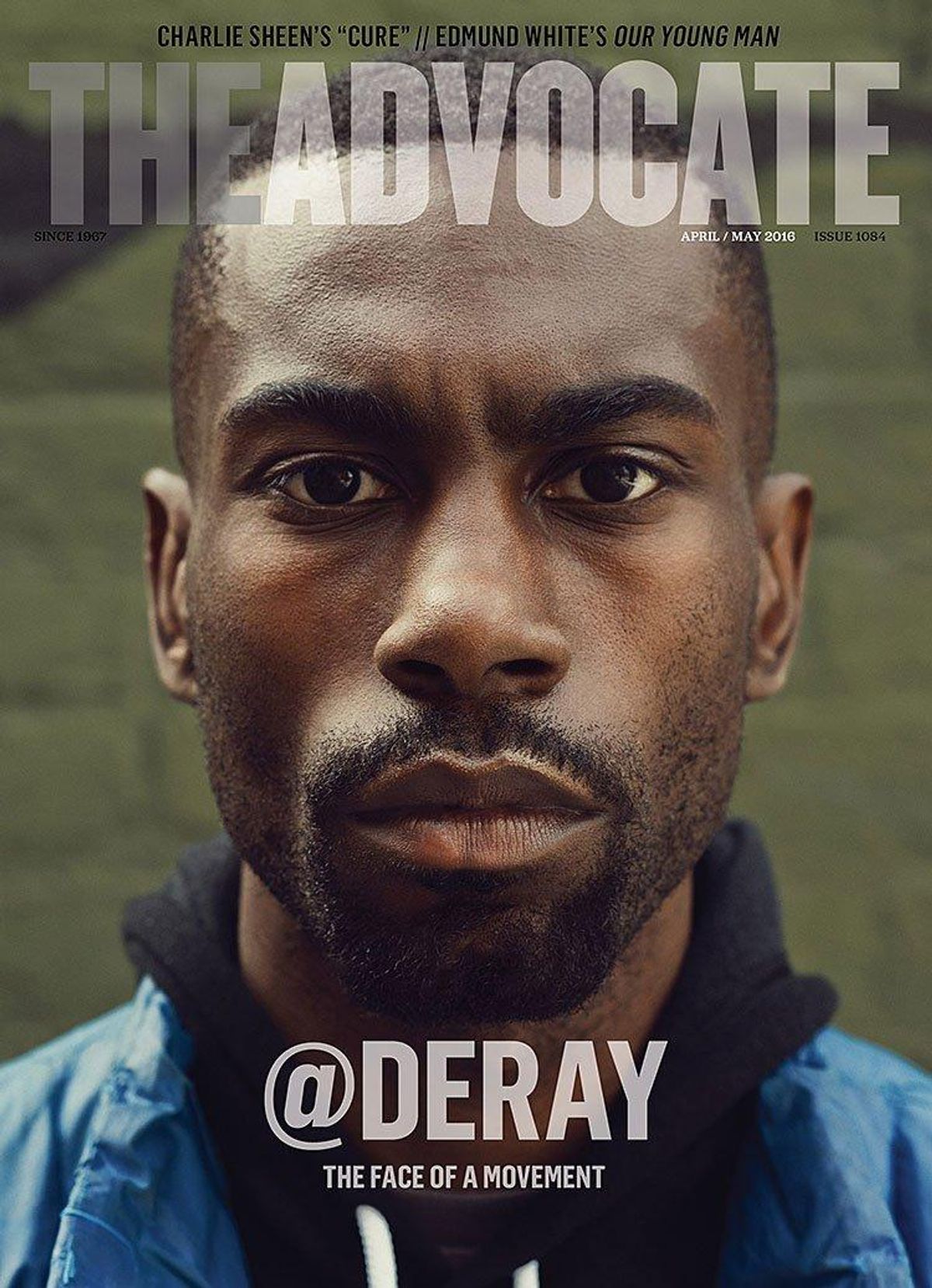For the cover story of the April/May issue of The Advocate, trans writer, media host, and activist Janet Mock explores why DeRay McKesson matters so much. While a number of leaders have emerged within the #BlackLivesMatter movement--including its founders Alicia Garza, Patrisse Cullors, and Opal Tometi and Mckesson's partner on Campaign Zero, Johnetta Elzie--OUT100 honoree Mckesson is undoubtedly its most recognizable face.
In her nuanced piece, Mock delves into an array of issues, spanning McKesson's personal life and political aspirations while offering context and exploring important issues of intersectionality. Here are five of our favorite moments from the cover story.
Read the cover story: Vested Interests: Why DeRay Mckesson Matters
His approach to Twitter
"Twitter is half me trying to live in the world, and half me processing and sharing the world. I share a lot, and some of that is to keep me honest," he says over well-done salmon and french fries. "Twitter is the friend that is always awake. There are very few things that I don't talk about--even my relationships. Any 'six-word story' I've written is about relationship stuff I'm working through."
The killing of Michael Brown drove Mckesson to leave a high-paying job and pursue social justice activism
After graduating with a degree in government and legal studies in 2007, Mckesson joined Teach for America--a national program that trains recent college grads from elite schools and places them as teachers in low-income districts. He taught sixth-grade math for two years in East New York, one of Brooklyn's poorest neighborhoods, before leaving the classroom, like many Teach for America alumni, to work in human resources for city schools, first in his native Baltimore and then Minneapolis--a job he left to commit himself to the Black Lives Matter movement in 2014.
"He was making six figures and left that with no backup plan, no family money. That's a calling," Calvin [Mckesson's father] says of his son's decision. "He recognized his talent and used it to better the world."
There's a lot of meaning behind his signature blue vest
"It's not bulletproof, but it totally makes me feel safe," he says of his beloved outerwear. "It's irrational, but it does."
Mckesson's choice to wear the same thing daily may be the antithesis of being fresh--harking back to winters in snowy Maine--but it is marketing genius. His steady image (the blue vest, the raised fist) enables him to cut through the clutter of content and allows audiences to recognize him as the messenger of the movement.
While there have been other black queer activists before him, Mckesson is unique
But he's more than just "a man." He is the most recognizable man in the movement, one who is openly gay, who doesn't suppress his sexuality, who occupies a unique position that not even Bayard Rustin--the chief architect of the 1963 March on Washington for Jobs and Freedom, who was largely hidden by the Civil Rights movement because of his sexuality--was able to occupy.
He's really proud to be gay
"I'm not ashamed to be gay. All of me gets to show up and you don't get to decide how," he says. "But I also don't feel that burden to come out. I feel the burden to do really good work. The biggest thing I can do in the movement is be a gay man doing really good work and not be afraid to love."
Read the full story on Advocate.com.

























































































